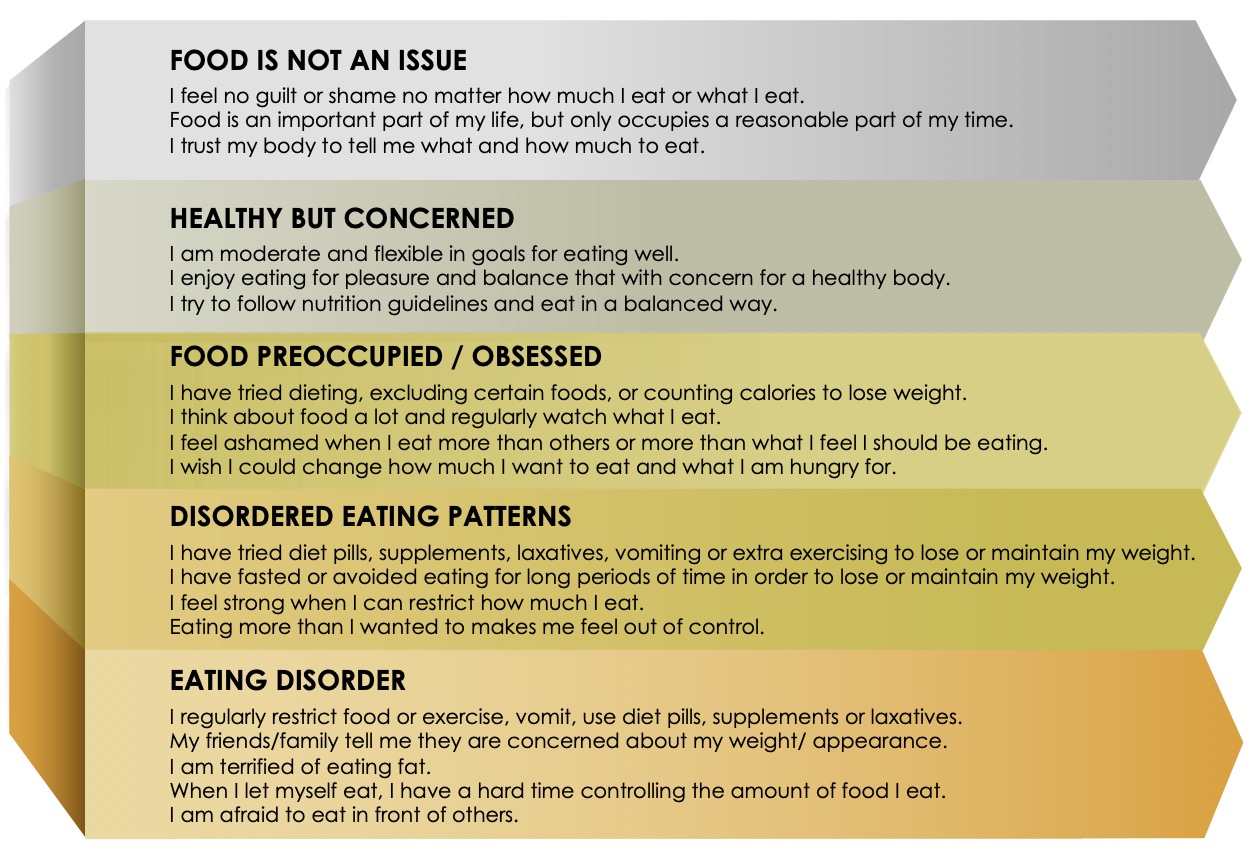18.12 Body Dissatisfaction: Disordered Eating
Eating Issues Continuum
The eating issues continuum illustrates the wide range of attitudes and behaviors that exists between having a healthy relationship with food and a diagnosable eating disorder. The space between includes disordered beliefs and behaviors surrounding food, eating, and body image; these can range in frequency and severity (Chen, McCloskey, & Kathryn, 2009). Body dissatisfaction is a strong risk factor for dieting and disordered eating (Stice, 2002). Progression through the middle of the continuum means that concerns about the body and food become a disproportionately higher priority than other things in life. Diet and exercise patterns become more rigid, obsessive, or excessive.
Eating Issues Continuum Visual

View a table format of the Eating Issues and Body Image Continuum.
Disordered eating includes a range of concerning eating behaviors. Many of these behaviors are shared with diagnosable eating disorders, but differ in terms of severity or frequency. Disordered eating includes things like:
- ignoring the body’s natural cues for hunger and satiety, which can mean under- or over-eating;
- eating to cope with negative emotions;
- eating compulsively;
- engaging in purging and other unhealthy weight control practices; and
- preoccupation with food or negative feelings associated with eating habits.
Rigid measuring and logging of food can be another sign of disordered eating. Though logging food intake—as a regular or sporadic practice—can be helpful in building self-awareness about a behavior, and even periodically to check-in, rigid measuring and logging of food intake on a daily basis over a long period of time can be a sign of a problematic relationship with food.
Disordered eating has been and is still most common in adolescent and young adult females. However, when compared to adolescent and young females, prevalence is increasing across all demographic sectors and at a relatively faster rate among males, middle-aged and older individuals, and people of low socioeconomic status (Mitchison et al., 2014).
Restrictive Eating is Disordered Eating
Restrictive dieting is a common form of disordered eating and includes behaviors like:
- Skipping meals
- Eating on a strict schedule
- Fasting
- Obsessively measuring foods
- Restricting food choices based on self-determined rules about what’s acceptable
- Cutting out one or more foods entirely for non medical-related reasons
- Focusing excessively on avoiding certain foods—particularly those that contain fat and carbohydrates
Restrictive dieting often leads to overeating and binge eating, followed by feelings of guilt, thus renewing the desire to begin the diet cycle again (Chen, McCloskey, & Kathryn, 2009; Liechty & Lee, 2013).
Self-Assess Your Understanding
- Provide examples of disordered eating behaviors and patterns.
includes a range of concerning eating behaviors, many of which are shared with diagnosable eating disorders, but differ in terms of severity or frequency.

